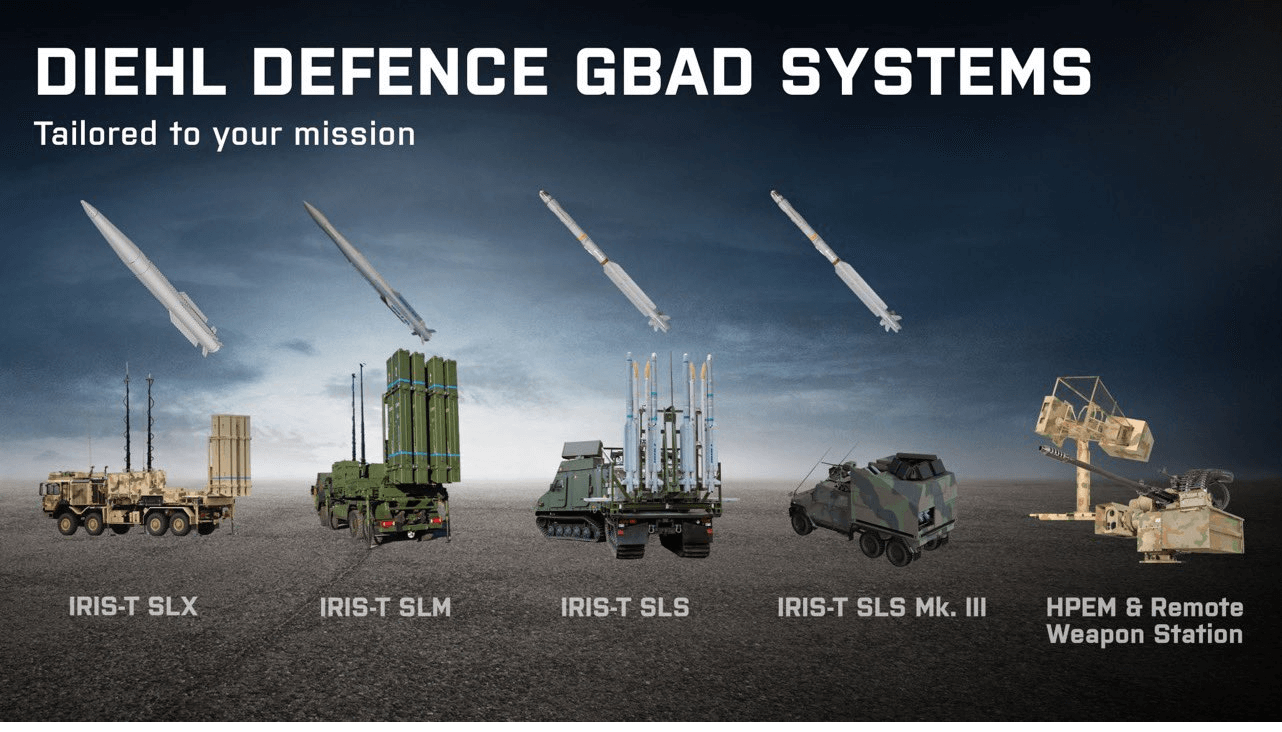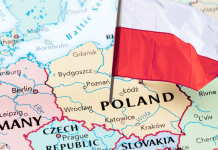Germany is facing growing pressure to expand and accelerate its military support for Ukraine following the leak of what appears to be a confidential weapons request list submitted by Kyiv.
Published by Bild, Germany’s largest news outlet, the document reportedly details a sweeping demand for billions of euros worth of advanced weaponry, reflecting Ukraine’s urgent need for enhanced air defense, mobile armored vehicles, and electronic warfare systems amid intensifying Russian attacks.
The list, reportedly presented to German government representatives by Ukrainian military planners, paints a clear picture of the evolving battlefield and Kyiv’s strategy to defend against increasingly sophisticated Russian tactics.
It also puts Berlin in a difficult position: How far is Germany willing—and able—to go as the war grinds into its third year, with U.S. support hanging in the balance?
Ukraine’s Strategic Weapons Wishlist
According to the report, Ukraine’s request is divided into three main categories: air defense, protected mobility, and electronic warfare.
At the top of the list are four IRIS-T SLM systems, a medium-range surface-launched air defense platform developed in Germany by Diehl Defence.
To equip these systems, Kyiv is seeking 1,500 guided missiles for the IRIS-T SLM, along with 500 additional missiles for the shorter-range IRIS-T SLS variant. Ukraine is also asking for 200,000 rounds of 40 mm ammunition aimed at countering the growing threat of Russian drone swarms.
On the mobility front, the request includes 1,000 mine-protected vehicles, 200 tracked armored vehicles, 30 armored mine-clearing vehicles, and up to 30 WiSENT armored engineer vehicles—specialized platforms designed for obstacle removal and infrastructure support. Additionally, Ukraine seeks 200 off-road vehicles to facilitate the rapid deployment of special forces.
In the realm of electronic warfare, Kyiv is seeking 1,000 GPS jammers to disrupt Russian drone operations and 200 mobile radar units for surveillance and target acquisition. These tools are increasingly vital as electronic interference and drone warfare become central elements of the conflict.
While defense and industry sources have confirmed the authenticity of the list, the German Defense Ministry has remained silent. A spokesperson cited military security and a new government policy of strategic ambiguity in Ukraine-related disclosures, stating: “We are not answering questions about individual support services.”
IRIS-T SLM: Germany’s Star Performer
At the heart of Ukraine’s wishlist is the IRIS-T SLM, a homegrown system that has become a cornerstone of modern European air defense.
Designed to counter a wide range of threats—from aircraft and helicopters to cruise missiles and drones—the system boasts a range of up to 40 kilometers and can hit targets at altitudes of up to 20 kilometers. Its infrared-guided missiles and advanced radar tracking capabilities allow it to simultaneously engage multiple threats with minimal reaction time.

Each system comprises a missile launcher, radar, and a fire-control unit, all of which are mobile and easily deployable. Since being deployed in Ukraine in 2022, the IRIS-T SLM has reportedly intercepted more than 60 Russian missiles and drones, including some of Moscow’s most advanced projectiles.
Other countries have taken notice. On July 3, Switzerland and Germany announced a joint procurement deal for the IRIS-T SLM, with Bern set to acquire five units under its 2024 armaments program. The contract is expected to be signed by mid-2025, underscoring the system’s growing reputation across Europe.
The IRIS-T SLM’s success has caught the attention of militaries far beyond Europe. For example, Pakistan sees it as a potential counter to India’s BrahMos missile, citing the IRIS-T’s combat record and technical capabilities as a deterrent solution in South Asia’s strategic calculus.
A New Era Under Chancellor Merz
The leak of Ukraine’s weapons request coincides with a leadership transition in Berlin. Friedrich Merz, who assumed office as Chancellor in early May 2025, has quickly moved to reshape Germany’s foreign policy posture—projecting confidence, clarity, and a firmer commitment to European security.
One of Merz’s first acts was to reaffirm Germany’s support for Ukraine while emphasizing discretion in military aid disclosures. The official rationale is to “keep Putin in the dark,” but critics argue the secrecy also shields the government from scrutiny over delayed or insufficient deliveries.
Ukraine, for its part, has honored this unspoken agreement. Officials in Kyiv have avoided commenting publicly on the leaked list, wary of jeopardizing Berlin’s support at a time when the U.S.—Kyiv’s largest donor—is navigating a politically charged shift in its Ukraine policy.
Merz’s international debut came during a trilateral push with France and Poland to present a united European stance, both in defense of Ukraine and in response to escalating trade tensions with the U.S. under President Donald Trump.
As part of this strategic realignment, Merz appointed Johann Wadephul, a defense expert and staunch supporter of Kyiv, as Germany’s new foreign minister—a clear signal that Ukraine remains central to Berlin’s foreign policy agenda.
“There are no ifs or buts when it comes to supporting Ukraine,” Merz declared in his first press briefing, underscoring a no-nonsense approach even as domestic voices continue to call for a reevaluation of Germany’s deepening military commitments.
Filling The Patriot Gap
Merz’s resolve is being tested not just by Ukrainian demands but by disruptions in the broader NATO supply chain. On July 4, the Chancellor personally called President Trump to press for renewed U.S. support—particularly for deliveries of the Patriot missile defense system, which has become another crucial element of Ukraine’s aerial shield.
The call followed news that the Pentagon had paused shipments of 30 Patriot missiles due to ‘low U.S. stockpiles’—a move that Kyiv warned could weaken its ability to intercept long-range Russian attacks. In response, Berlin is exploring alternatives, including purchasing new Patriot units from the U.S. or sourcing them from third-party NATO stockpiles.
Germany has already provided three Patriot systems from its own reserves and is now actively seeking more. Defense Minister Boris Pistorius, who has taken a hands-on role in coordinating international support, launched an initiative at the Ramstein group of 50 nations supporting Ukraine to track down available Patriot assets.
He is scheduled to travel to Washington later this month to meet with his U.S. counterpart and discuss both procurement and production constraints.
Simultaneously, Berlin is reportedly preparing a €25 billion tank order, a move that would bolster both German ground forces and NATO’s eastern flank. While the Defense Ministry has not confirmed the report, it aligns with broader efforts to rearm in light of the war in Ukraine and increasing instability across the European security landscape.
The MIM-104 Patriot, developed by Raytheon, has already proven its worth on Ukrainian soil, successfully intercepting high-value Russian targets, including the Iskander-M and Kinzhal hypersonic missiles.
Its multifunction radar system can track over 100 threats simultaneously and engage targets at altitudes of up to 24 kilometers. The PAC-2 GEM-T variant can neutralize cruise missiles and aircraft from up to 160 kilometers, while the PAC-3 MSE is optimized for ballistic missile defense within a 60-kilometer range.
Budget & Strategic Calculus
While the full extent of Germany’s future deliveries remains unknown, the financial groundwork may already be in place. In 2025, Berlin raised its military aid budget for Ukraine from €7.1 billion to €8.3 billion, a €1.2 billion increase that could provide the fiscal space to fulfill key parts of Kyiv’s latest request.
Defense Minister Pistorius now faces a complex balancing act—managing rising expectations from Ukraine, coordinating within NATO, and addressing domestic skepticism, all while staying within budgetary and political constraints.
Looking Ahead
The leaked wishlist and Germany’s evolving response come at a critical moment in the war. Russia is escalating its missile and drone attacks, U.S. support is no longer guaranteed, and Ukraine’s ability to hold the line increasingly depends on the reliability and speed of Western aid.
Whether Berlin answers Kyiv’s call with action—or caution—will not only shape the next phase of the war but also Germany’s standing as a central power in Europe’s security architecture.
In this pivotal moment, Germany is no longer just responding to a crisis; it is helping define what the West’s response looks like.
- Shubhangi Palve is a defense and aerospace journalist. Before joining the EurAsian Times, she worked for ET Prime. She has over 15 years of extensive experience in the media industry, spanning print, electronic, and online domains.
- Contact the author at shubhapalve (at) gmail.com




